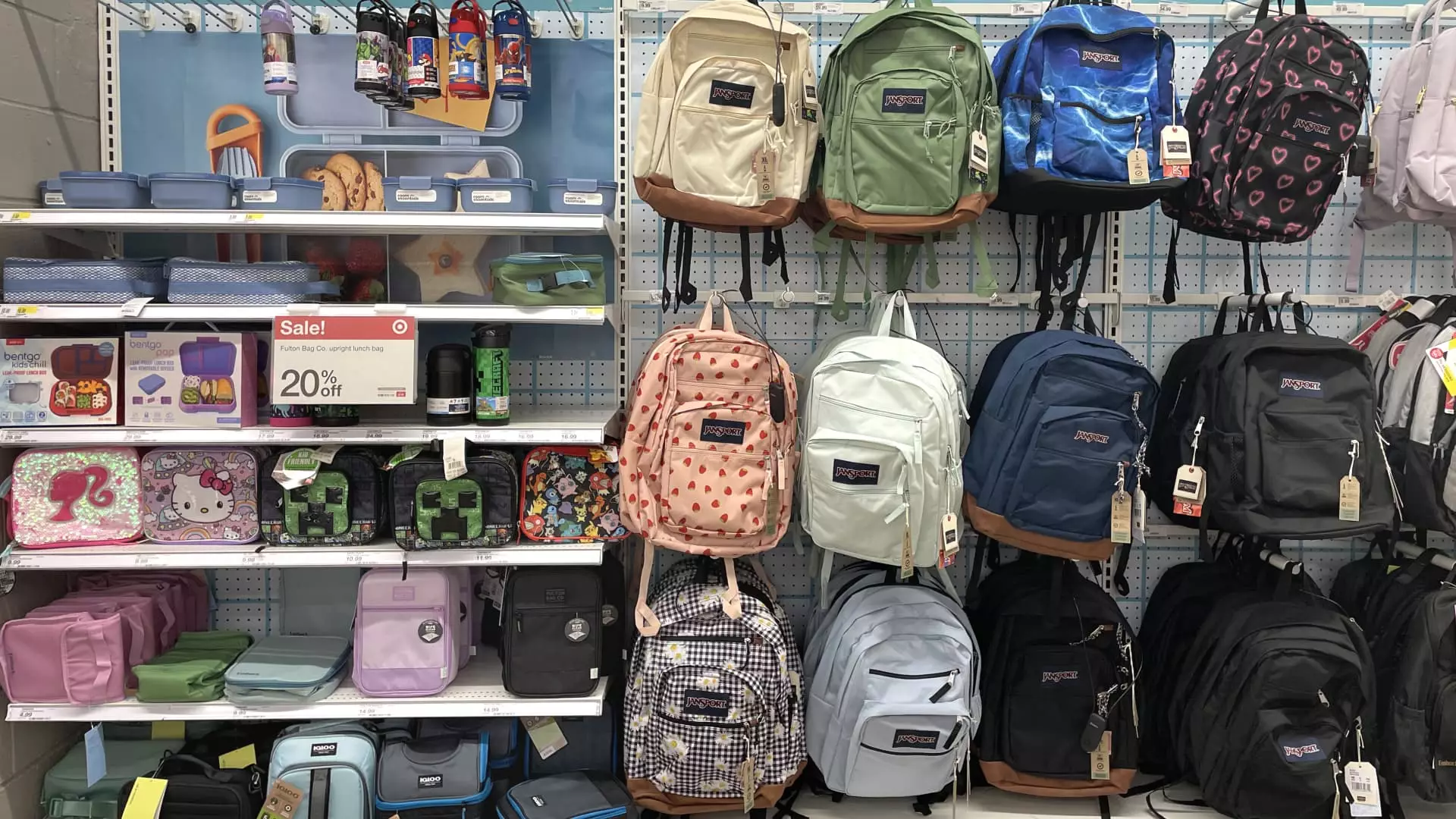As the back-to-school season approaches, the financial strain on families becomes increasingly evident. This year’s shopping landscape is marked not only by rising prices but also by a fragile economic environment influenced heavily by policy decisions and international trade tensions. Inflationary pressures, fueled in part by new tariffs, are eroding the purchasing power of many households. Parents, already stretched thin, now confront a stark reality: the cost of essential school supplies and apparel is climbing relentlessly, making the act of preparing their children for the new academic year a daunting financial challenge.
The disturbing trend is highlighted in recent surveys which show a significant portion of families are struggling to cope. Nearly 40% admit they cannot afford the costs outright, while a worrying 44% say they are contemplating taking on debt to cover basic school expenses. The practice of borrowing—once a measure reserved for crisis situations—has become normalized, revealing a deeper economic insecurity affecting middle- and lower-income households alike. These indicators point to an unsettling shift in consumer behavior, driven not by choice, but by necessity, exposing the vulnerabilities in our social safety nets and economic policies.
The Role of Policy and International Trade in Shaping Reality
At the heart of this crisis lies the contentious issue of tariffs and trade policies. The Trump administration’s tariff strategy, ostensibly aimed at safeguarding American industries, has had a tangible ripple effect on everyday consumers. While the initial implementation sought to protect certain sectors, the broader impact has been an unintended tax on families already navigating flat wages and rising costs. Tariffs on imported goods—ranging from electronics to clothing—exert upward pressure on prices, making the simplest of supplies more expensive than they would otherwise be.
Despite recent pauses on some tariff hikes, the looming threat of higher duties hangs over consumers. Anticipation of future price increases leads to preemptive shopping behaviors—early purchases and stockpiling—which, paradoxically, can drive prices even higher due to increased demand. This cycle demonstrates how policy decisions, particularly those that seem detached from immediate realities, can exacerbate economic hardship for everyday Americans. It also highlights an urgent need for policymakers to consider the real-world consequences of trade tactics on vulnerable populations, especially families who must stretch every dollar amid uncertain economic conditions.
Consumer Adaptation and the Myth of Benevolent Savings
Faced with the dual challenges of inflation and tariffs, families are compelled to alter their traditional shopping habits. While some advocate for strategic purchasing—such as shopping during sales, using coupons, or buying secondhand—the underlying issue remains unresolved: the core affordability problem. These adaptations, although helpful, are merely band-aids on a widening wound.
An overemphasis on individual resilience may obscure systemic failures—such as wage stagnation and insufficient social safety nets—that leave families with little choice but to sacrifice essentials or incur debt. When 62% of shoppers plan to start their back-to-school shopping early to dodge future price hikes, it underscores a collective anxiety rooted in economic instability rather than prudent planning. Moreover, the practice of parents spending beyond their means—sometimes even going into debt—to help their children “fit in”—raises ethical concerns about societal values and the relentless pressure to conform.
The narrative around “saving money” often glosses over structural inequalities. Discount shopping and resale sites are valuable tools, but they depend on disposable income and access to technology—resources not equally available to all. For many, these are just temporary reliefs rather than solutions to fundamental economic problems. Our societal failure to address wage disparities and ensure stable, livable incomes fundamentally undermines the ability of families to approach back-to-school shopping—or any other essential expenditure—with confidence and dignity.
The Need for Thoughtful Policy and Community Support
This crisis calls for a reconsideration of how economic policies influence everyday lives. The current drift towards protectionist tariffs and short-term cost-cutting measures by policymakers often neglect the human dimension—especially that of working families. Instead of relying on transient market fixes, there must be a concerted effort to craft policies that bolster income growth, reduce inequality, and prevent households from falling into debt traps for basic needs.
Community-based initiatives and social safety nets can play a crucial role here. Schools, nonprofits, and local governments should collaborate to provide affordable or free school supplies, expanding access for those most in need. Recognizing that the cost of education-related expenses is not just a personal burden but a societal imperative, policymakers have a responsibility to ensure that economic strategies do not inadvertently deepen disparities.
It is paramount that we foster a balanced approach—one that recognizes the importance of protecting domestic industries while also safeguarding the economic well-being of families. Policymakers need to prioritize fair wages, job stability, and robust social programs so that the burden of inflationary shocks does not fall disproportionately on the most vulnerable. Only through thoughtful, inclusive economic reform can we hope to alleviate the undue hardship faced by families preparing for another school year amid turbulence beyond their control.


Leave a Reply